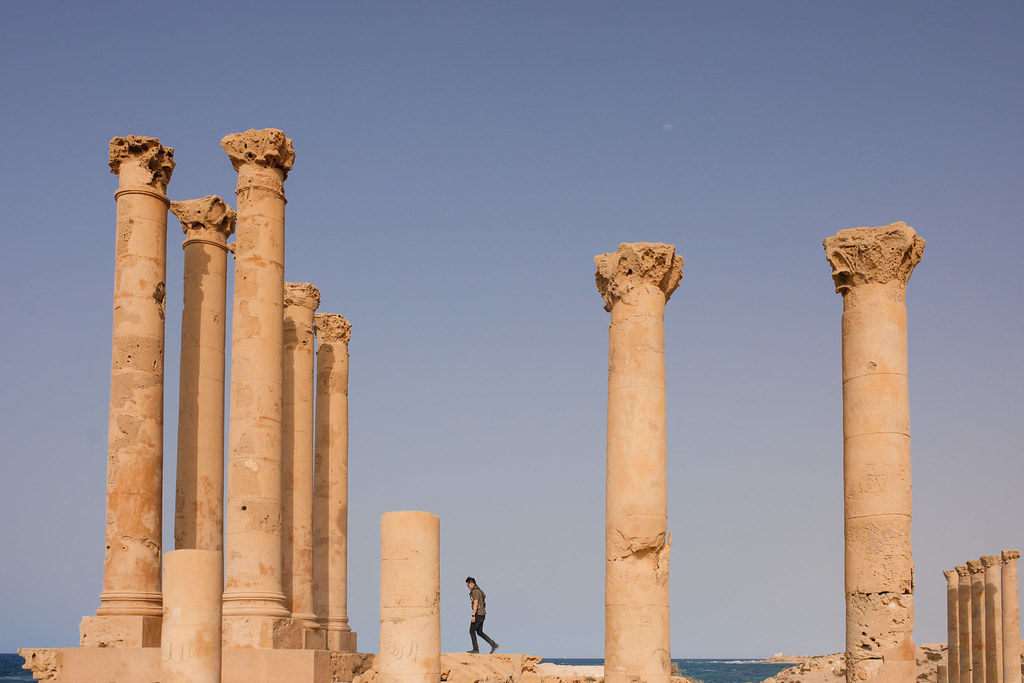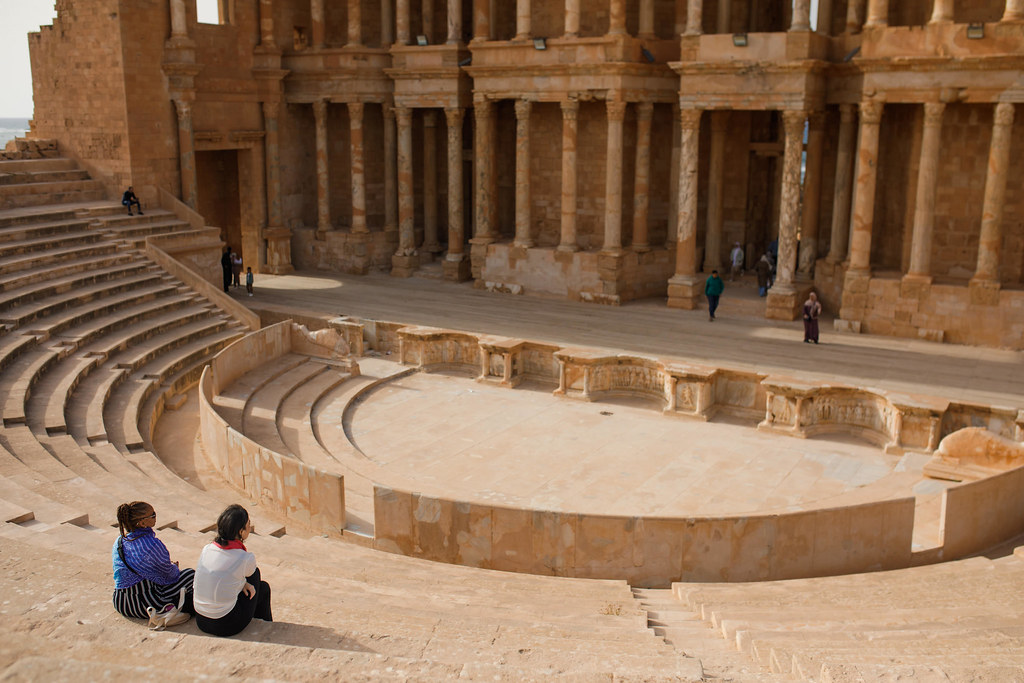If a photo looks professionally taken, then that credit goes to Paul Woo or Francois DeAsis (check the @FJD in the bottom right corner)
On our third day in Libya and from Tripoli we had breakfast and took another tour around the old town for Corinna (who had missed it as she arrived late on the first day) and then the Red Castle. Afterwards we then began our way towards 2 hours northwest to Sabratha – one of the most important historical sites in Libya.
The city dates back to 500BC and is now a UNESCO World Heritage Site.
Among the numerous scattered houses of worship, forums, bathhouses, and saunas . . .
. . . Sabratha’s best maintained areas outside the colosseum, would be the Mausoleum off to the side when you first enter . . .
. . . and the centrally located Temple of Bacchus.

Trying to set up for our first official group photo can be difficult here. After all, when else are you ever going to have the chance at gallivanting among 2500+ year old ruins?
It’s easy to get distracted at a place like this.
Especially by the sturdiness of their public toilets:
The Phoenicians and Romans previously had settled in and used Sabratha as a seaport, which scenery reminded me of the seaside Roman-era ruins we had stumbled upon in Sardinia:
The incredible mosaics here are all original with some of the original colors still intact.
We ended our 2 hour visit at the majestic Sabratha Theatre.
The best way to enter is via the stage first:
Dating back to 175 CE, it could hold up to 10,000 spectators.
The reliefs here are all original and unrestored.
And unlike Bosra, which is majestic in its own right, the backstage here leads to the sea and the columns are intact all the way to the third floor. That made all the difference for us.
After 2 hours exploring and having a fried chicken lunch by Sabratha, we returned back to Tripoli where we stopped for a quick peek of an example of a pipeline segment of the Great Man-Made River: the world’s largest network of underground rivers, pipelines and aqueducts.
They take high-quality fresh water from ancient underground aquifers deep in the Sahara to the coast of Libya for domestic use, agriculture, and industry.
We then kicked back at my favorite terrace café so far in Tripoli:
… and the best hummus and Lebanese dining I’ve had outside of Lebanon at Fattoush Lebanese Restaurant:
17 total views
, 3 views today
![]()
- At time of posting in Sabratha, it was 20 °C - Humidity: 69% | Wind Speed: 24km/hr | Cloud Cover: clear and perfect































